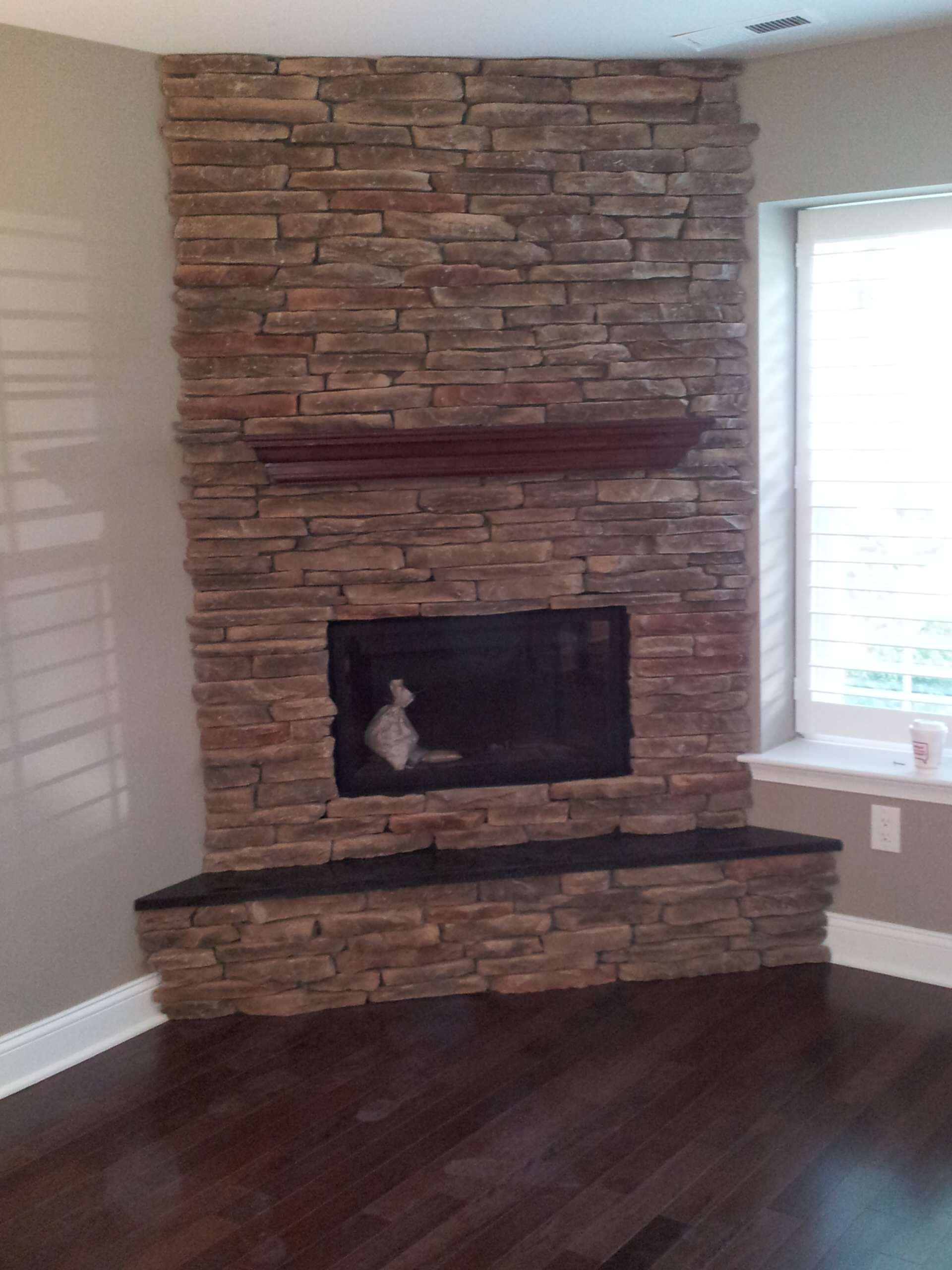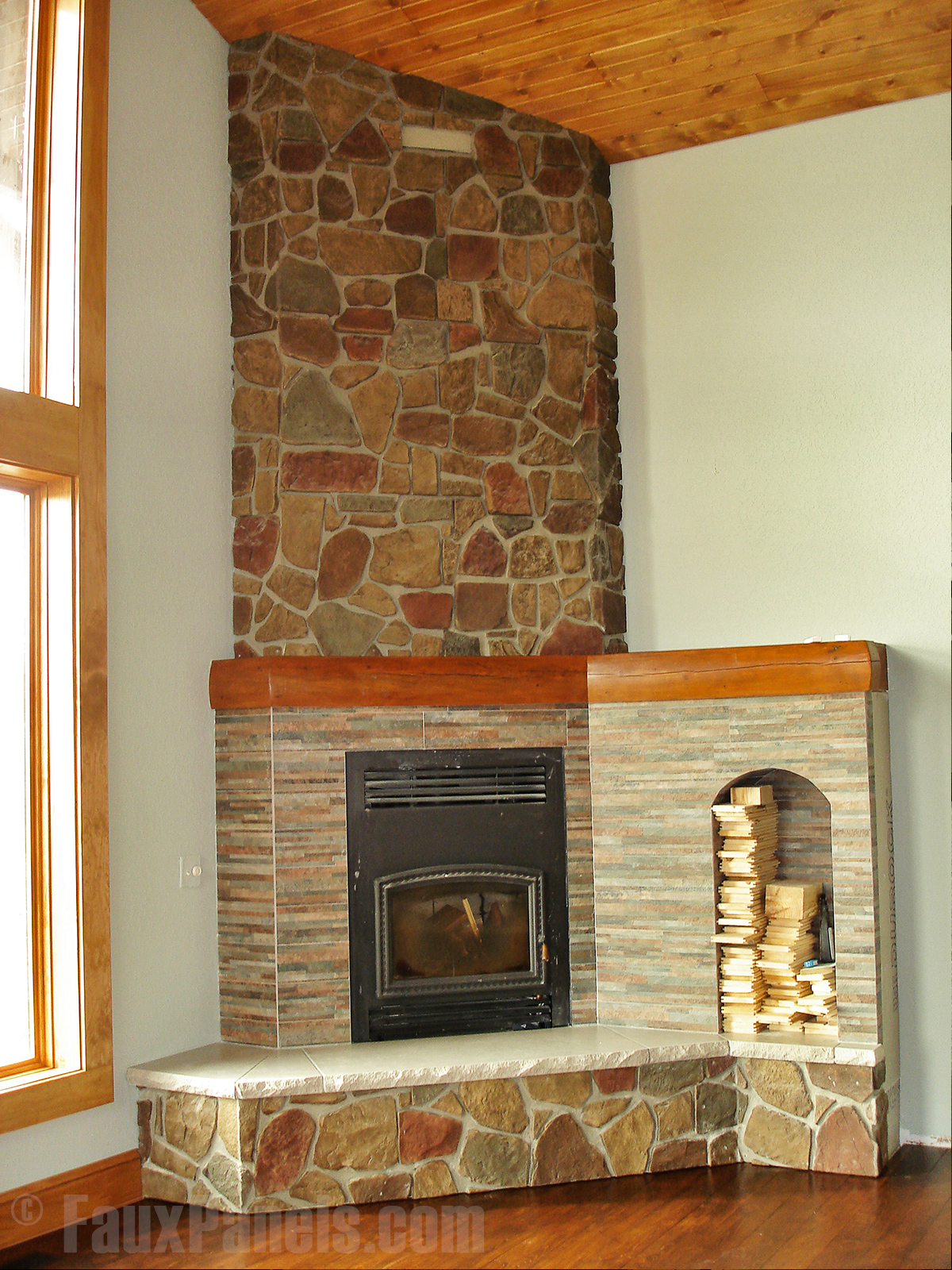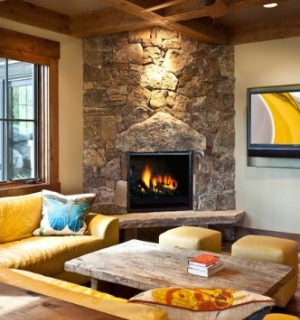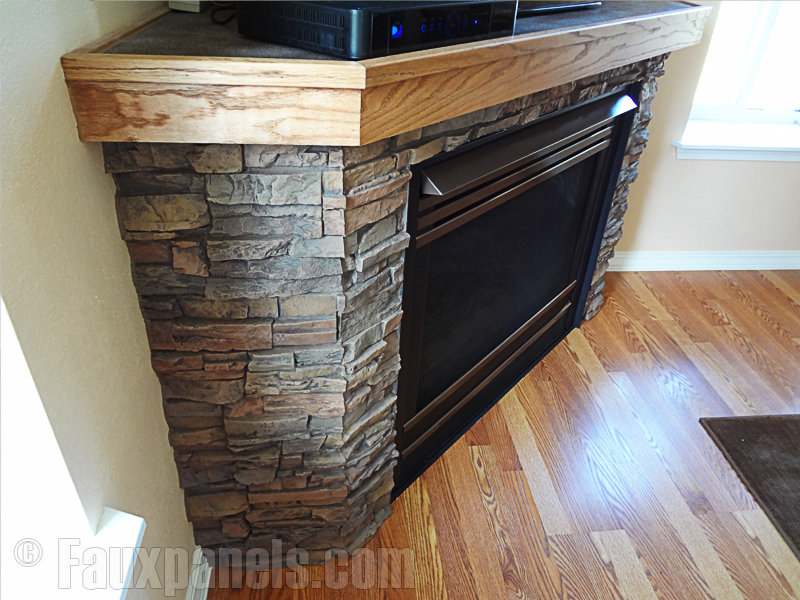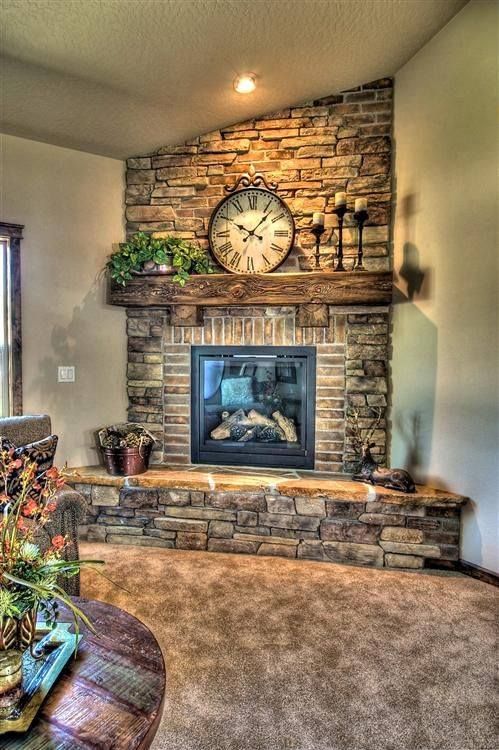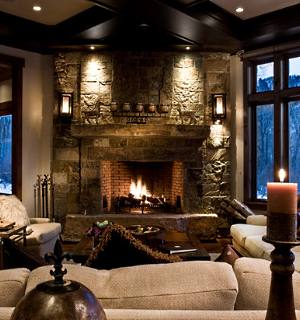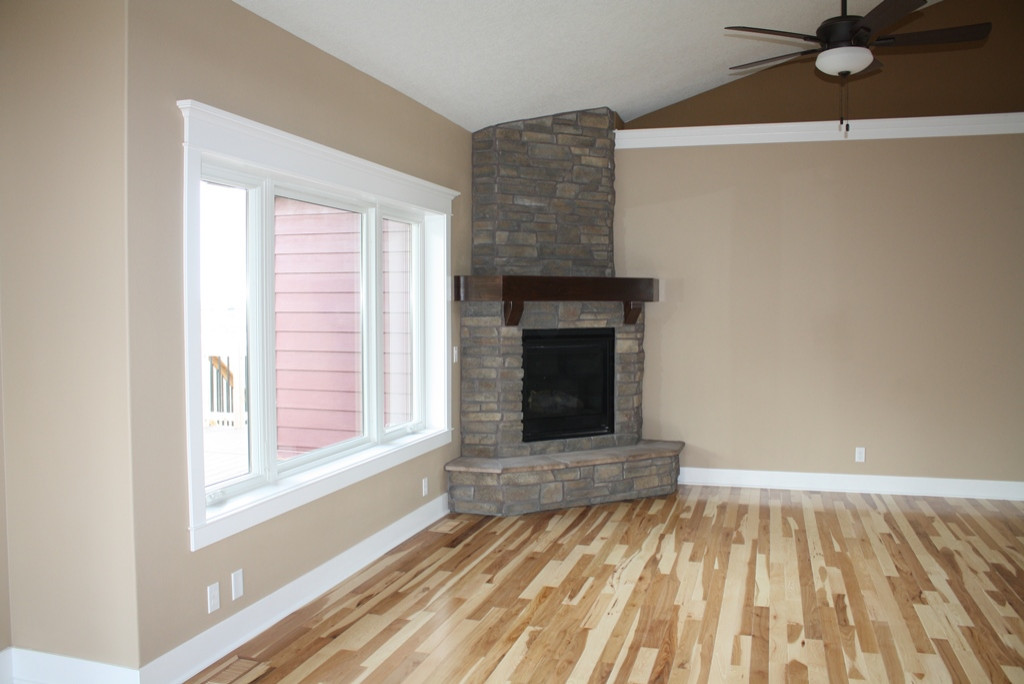Corner fireplace stone designs offer a smart solution for homes where space is limited or traditional fireplace placement isn’t feasible. These angular hearths turn underutilized corners into stunning focal points while providing efficient heat distribution. From rustic stacked stone to sleek modern cladding, corner fireplaces can be tailored to complement any architectural style. Here are several essential aspects of stone fireplace designs for corners, helping you create a beautiful and functional heating feature.
Natural Stone Veneer Options
Fieldstone creates rustic charm with irregular shapes and earthy tones. These uncut stones fit together in organic patterns that mimic centuries-old masonry work. The varied thickness (2-4 inches) adds dimensional interest to corner installations. Lighter sandstone hues keep spaces feeling open, while darker slate makes bold statements. Mortared installations provide stability, while dry-stack methods offer easier future modifications.
Thin-cut ledger stone offers easier installation without sacrificing authenticity. These precision-cut stones have flat backs that adhere directly to prepared surfaces, making them ideal for retrofitting existing corners. Available in both natural and manufactured versions, ledger panels create the illusion of full-depth stone at just 1-2 inches thick. The uniform thickness simplifies corner transitions where two walls meet at 90 degrees.
Limestone provides a refined, Old World aesthetic for traditional homes. Its soft beige and gray tones work well with both light and dark interiors. Honed limestone offers smooth sophistication, while tumbled varieties add texture. The material’s natural thermal properties help radiate heat efficiently. Since limestone is porous, sealing prevents staining from soot or spills in high-use fireplace applications.
Modern Stone Cladding Designs
Smooth-cut granite panels create contemporary corner fireplaces. The polished stone reflects light beautifully, enhancing the corner’s brightness. Large-format slabs minimize visible seams for sleek appearances. Granite’s natural heat resistance makes it ideal for wood-burning applications. Pair with minimalist metal surrounds for industrial contrast or wood accents for warmth.
Stacked slate tiles offer geometric precision in modern settings. Uniform rectangular tiles installed in orderly patterns emphasize clean lines. Dark charcoal slate makes dramatic backdrops for flames, while greenish hues add unexpected color. The material’s natural cleft texture provides subtle grip underfoot while maintaining refined aesthetics. Thin slate tiles (1/2 inch) work well in small corners where bulkier stone might overwhelm.
White marble corner surrounds brighten compact spaces. Bookmatched slabs create mirror-image veining that draws the eye. Carrara marble’s soft gray streaks add movement without busyness, while pure white Thassos marble offers minimalist appeal. Honed finishes provide better traction than polished near fireboxes. For protection, apply heat-resistant sealants that won’t yellow over time.

Stone Fireplace Construction Methods
Full masonry construction provides the most authentic stone fireplace. Built from the foundation up, these use actual stone blocks rather than veneers. A skilled mason carefully fits each stone to create structural integrity without visible supports. The substantial thickness (8-12 inches) offers excellent heat retention but requires significant corner space. This method works best in new construction or major renovations.
Veneer-over-frame systems allow stone additions to existing corners. Metal stud framing creates the fireplace form, which then receives stone veneer facing. This approach accommodates both thin manufactured stone and natural stone veneers. The hollow core can house ventilation systems or wood storage. Proper fireproofing between framing and veneer is essential for safety.
Prefabricated stone panels simplify corner installations. These interlocking units combine multiple stones in manageable sections that fit together like puzzle pieces. Some systems use lightweight aggregates that mimic real stone without the weight. The panels often include corner-specific pieces for seamless 90-degree transitions. While less customizable, they dramatically reduce installation time and cost compared to traditional masonry.
Corner-Specific Design Considerations
Angled firebox openings improve corner fireplace functionality. A 45-degree orientation allows viewing from adjacent seating areas rather than just facing one wall. Some designs incorporate two-sided glass that’s visible from multiple angles. The firebox shape should complement the stone pattern—rectangular for stacked stone, arched for rounded river rock.
Transition details ensure cohesive corner intersections. Mitered stone edges create clean 90-degree turns for contemporary designs. Alternating stone courses between walls produces a woven effect in traditional installations. Corner accent stones with special cuts or colors can highlight the angle as a design feature. Always view stone samples in the actual corner before finalizing patterns.
Mantel integration requires careful planning in corners. Floating stone shelves maintain clean lines without bulky supports. Wood mantels introduce warmth against cool stone but need proper heat shielding. Some designs extend the stone cladding up to the ceiling, eliminating traditional mantels for streamlined looks. Consider asymmetrical mantel placements that acknowledge the corner’s unique geometry.
Mixed Material Combinations
Stone and wood pairings balance rustic and refined elements. Stone fireboxes with wood mantels and surrounds create inviting traditional looks. Reclaimed barn wood adds character against smooth-cut stone. For modern twists, try floating walnut shelves over stacked slate. Always maintain proper clearance between combustible wood materials and firebox openings.
Metal accents complement stone’s natural textures. Wrought iron surrounds frame stone fireboxes beautifully in cottage settings. Stainless steel bands or edging provide contemporary contrast against rough stone. Copper cladding develops a rich patina alongside limestone or fieldstone. Metal hearth trims protect stone edges from wear while adding decorative detail.
Stone and tile combinations offer creative possibilities. Mosaic tile insets create focal points within stone surrounds. Subway tile backsplashes continue up from stone hearths for cohesive flow. Cement tiles with geometric patterns make bold contrasts against neutral stone. Use non-combustible tiles near firebox openings and proper underlayment for heat protection.
Maintenance and Safety
Regular sealing preserves stone’s appearance and performance. Penetrating sealants protect porous stones from soot and grease absorption. Reapply sealers annually in high-traffic areas, checking for water repellency by sprinkling water on test spots. Avoid silicone-based products that can create cloudy residues on natural stone.
Proper cleaning methods prevent stone damage. Use pH-neutral stone cleaners and soft brushes for routine maintenance. For soot buildup, poultices made from baking soda and water draw out stains gently. Never use acidic cleaners on calcareous stones like limestone or marble. Immediately wipe up spills, especially oils or wines that could penetrate unsealed stone.
Safety clearances ensure worry-free operation. Maintain at least 36 inches between the firebox opening and combustible materials. Stone hearths should extend at least 20 inches from the fireplace opening. Install spark guards for wood-burning units, choosing models that complement the stone design. Have chimneys inspected annually to prevent creosote buildup behind stone surrounds.
What’s the best stone for a small corner fireplace?
Thin slate or ledger stone works best for compact corners, adding texture without consuming valuable space. These materials typically install at 1-2 inches thick, minimizing the footprint. Light-colored stones like white marble or cream limestone help small corners feel more open. Consider large-format tiles or panels that reduce visible seams, creating a cohesive look. For extremely tight spaces, stone veneer over metal stud framing preserves room dimensions better than full masonry construction.
Can you add a stone corner fireplace to an existing home?
Existing homes can accommodate corner fireplaces through several methods. Prefabricated ventless ethanol fireplaces with stone surrounds require minimal structural modifications. Wood-burning inserts can be framed into corners with proper venting through exterior walls. Stone veneer over existing drywall or masonry transforms plain corners without major demolition. Always consult professionals to verify load-bearing capacities and meet local building codes for fireplace installations.
How do you arrange furniture around a corner stone fireplace?
Position seating at a 45-degree angle to the corner for optimal fire viewing. Allow at least 36 inches clearance between furniture and the hearth for safe traffic flow. Sectionals with a corner chaise naturally complement the fireplace’s geometry. Two small sofas arranged in an L-shape create cozy conversation areas. In open-concept spaces, use the stone fireplace as a natural room divider between kitchen and living areas.
Are corner stone fireplaces energy efficient?
Properly designed stone fireplaces retain and radiate heat effectively. The stone’s thermal mass absorbs heat from fires, releasing it slowly after the fire extinguishes. Corner placement allows heat to project diagonally across rooms rather than just along one wall. For maximum efficiency, choose EPA-certified inserts with tight-sealing doors. Always include operable dampers and consider glass doors to control air flow when the fireplace isn’t in use.
Can corner stone fireplaces be converted to gas?
Existing wood-burning corner fireplaces can usually convert to gas with professional installation. Direct-vent gas inserts fit into existing fireboxes, with vent pipes routed through exterior walls. Vent-free logs require minimal modifications but have specific clearance requirements. Stone surrounds typically accommodate conversions without alteration, though some refacing may be needed around new inserts. Always hire licensed gas technicians for conversion work to ensure proper combustion and ventilation.
Cozy Corner Fireplace Ideas – Barron Designs
Best Corner Fireplace Ideas
Stone Corner Fireplace Designs . . . Vastly Versatile!
Corner Stone Fireplace
Flaming Chichi: Corner Fireplaces Heat Up Living Space Decor
Best Corner Fireplace Designs – Angled Interior Ideas
Related Posts:
